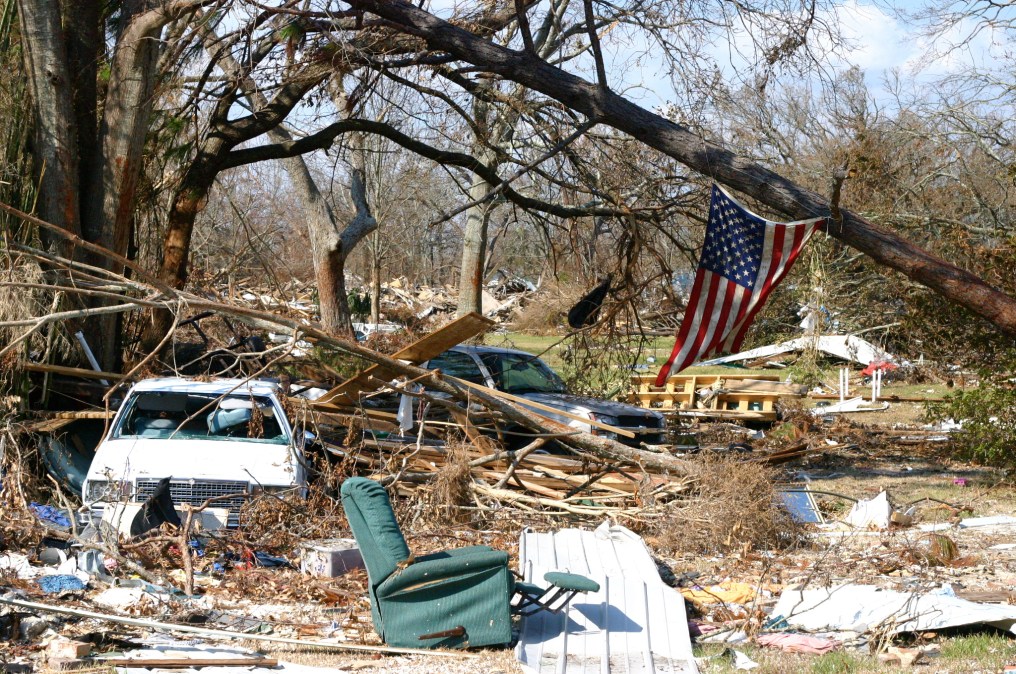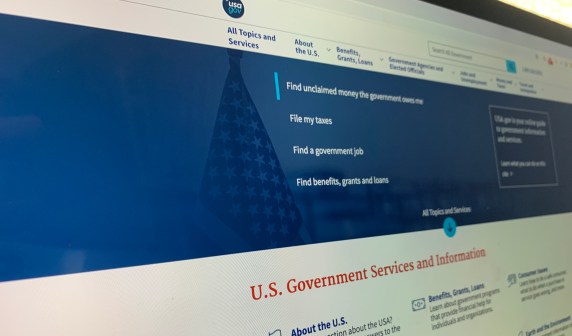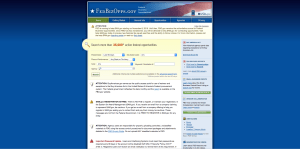Fixing disaster relief may mean updating DisasterAssistance.gov

Amid floods, tornadoes, and myriad other emergencies, disaster survivors are often directed to DisasterAssistance.gov, a website run by the Federal Emergency Management Agency. But following a push by lawmakers to streamline the federal disaster assistance process, there’s interest in overhauling the FEMA website, too.
DisasterAssistance.gov is extremely important. The site offers information on finding relief assistance, as well as a way to apply online for FEMA’s Individuals and Households Program assistance program. There were nearly 30 million visits to DisasterAssisance.gov last year, according to the agency, which spent approximately $11 million in 2022 to maintain the site.
While some people impacted by disasters apply for assistance from FEMA’s Individuals and Households Program in person or on the phone, during the last 12 months around 75% of program applicants used DisasterAssistance.gov — and 70% of those visits were completed via a mobile device, according to the agency.
Streamlining disaster survivors’ access to funding is a key pillar of the Biden administration’s push to improve citizens’ experience of government services. In May, the White House announced a multi-agency project to improve the SBA disaster loan application process.
“In order to get federal assistance from the president and FEMA, that’s kind of where this website comes into play, for the most part,” Laura Adcock, Disaster Recovery Branch Chief for Ohio Emergency Management Agency, told FedScoop.
Now, though, there’s also a growing effort led by Senate lawmakers to consolidate key aspects of federal disaster assistance— which would create changes that would invariably impact the site. Notably, DisasterAssistance.gov includes links to 76 different forms of assistance from several different federal agencies right now. Still, “the website only allows applicants to apply for one FEMA program and has limited capacity for information sharing among participating agencies,” according to a recent Senate report.
“Someone might be able to access things that they might need, whether it’s financial assistance, whether it’s temporary housing through a multitude of federal agencies, and you have to go to each separately,” added Tiffany Del Rio, the deputy director for government relations and advocacy at Team Rubicon, an NGO that mobilizes veterans to assist with disaster response. “You have to follow those applications in multiple places.”
The most recent programs were added to the DisasterAssistance.gov relief program repository in March 2022. According to FEMA, federal agency partners are prompted to review these forms of assistance every year, though changes and new forms of assistance can be sent to FEMA at any time. “The FOAs don’t change often. They only change when an agency decides an existing or new program or service would benefit people affected by a disaster or when they need to retire an old one,” the agency added in an email responding to FedScoop’s questions.
FEMA highlighted two companies it currently works with to maintain the site: Appddiction Studio, which provides Amazon Web Services GovCloud infrastructure services, and LexisNexis, which helps with identity verification, among other services. Records on USASpending show that at least one other company has been involved with the site — at one point, a firm called Teracore had a five-year, $18.6 million agreement that referenced the development of the portal (FedScoop reached out to Teracore and did not hear back before publication).
FEMA receives engineering and software development assistance from the Department of Labor, too, the agency said.
There could be changes coming, though. The Disaster Assistance Simplification Act, which was introduced in May by Senators James Lankford (R-OK), Gary Peters (D-MI), and Rand Raul (R-KY), pushes for a more integrated application for disaster assistance that would be available through a new version of the website. The revamped DisasterAssistance.gov would allow people to receive updates on their applications for various assistance programs, among other changes.
According to an estimate by the Congressional Budget Office, FEMA is likely to need $34 million between 2023 and 2028 to “develop new user interfaces and information sharing mechanisms and to enhance the website’s capacity to manage, store, and secure data.”
The website would also be used as a way to share information about disasters between different agencies. As part of the proposal, the head of DHS would publish a privacy impact assessment for the platform.
“Our proposal creates one online application portal to use across federal agencies to ensure disaster victims can easily apply for assistance on their phone or tablet while they clean up,” said Sen. Lankford in a press release published in May.
Even if the legislation does not pass, other changes may still be coming to DisasterAssistance.gov. FEMA is planning a modernization of its online registration form, which is scheduled for the end of this fiscal year, as well as eventual updates to other backend applications. FEMA is also weighing creating a unified disaster application with the Small Business Administration, and potentially other agencies, too.
Following a transition to cloud technology, the agency is planning to decommission its legacy infrastructure at the end of the 2024 fiscal year.
In the meantime, the agency says the DisasterAssistance.gov runs on fully redundant data centers, so it’s never experienced a complete outage. Instead, the agency relies on a strategy of redirecting traffic when technical problems emerge.
For example, in November 2021, the Amazon ElastiCache and Elastic Load Balancing services operated by Amazon Web Services “experienced an outage” that lasted around three hours, which led the agency to relocate traffic to its “infrastructure not hosted in this region,” the agency explained.






